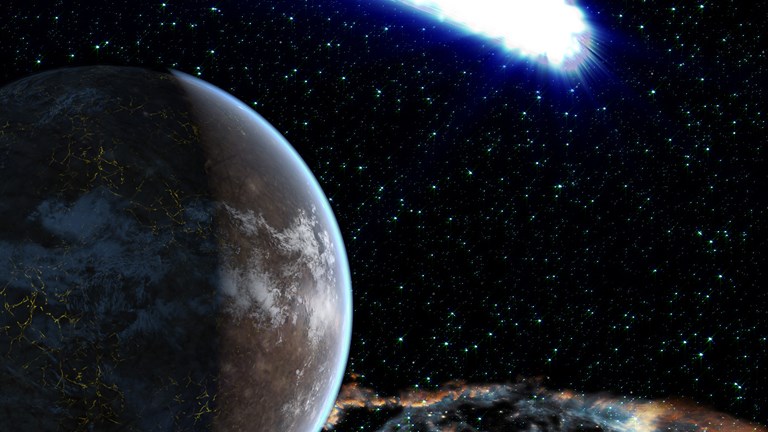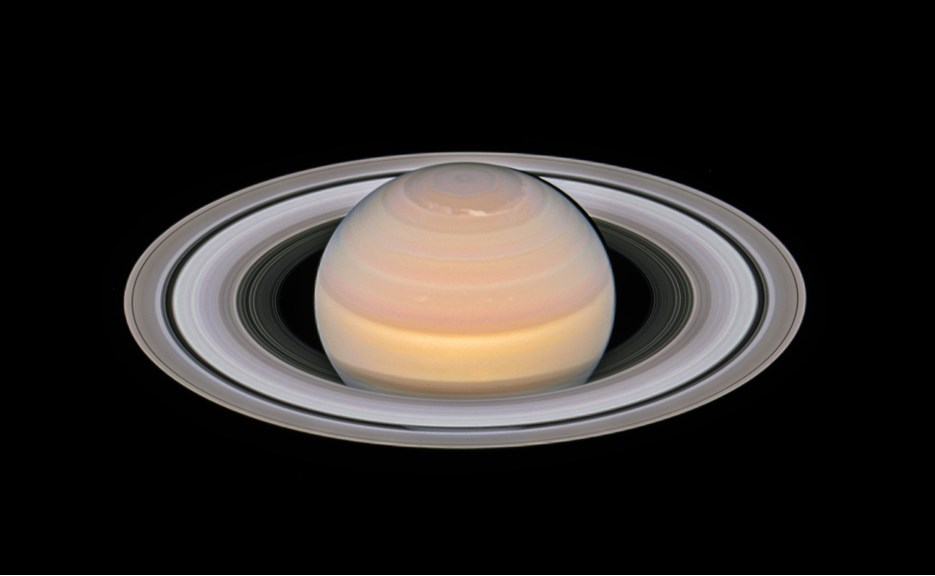Skynotes: August 2022
Upcoming events
Melbourne Sun times
| Date | Rise | Set | Day length | Solar noon§ |
|---|---|---|---|---|
| Monday 1st | 7:20 | 5:32 | 10:11 hrs | 12:26 |
| Thursday 11th | 7:10 | 5:41 | 10:30 hrs | 12:25 |
| Sunday 21st | 6:57 | 5:49 | 10:51 hrs | 12:23 |
| Wednesday 31st | 6:43 | 5:57 | 11:13 hrs | 12:20 |
§ When the sun is at its highest, crossing the meridian or local longitude.
Moon phases
| Date | Phase |
|---|---|
| Friday 5th | First Quarter |
| Friday 12th | Full Moon |
| Friday 19th | Third Quarter |
| Saturday 27th | New Moon |
Moon distances
Thursday 11th is lunar perigee (nearest to Earth) at 359,828 km.
Tuesday 23rd is lunar apogee (furthest from Earth) at 405,418 km.
Planets
Mercury, which returns from its passage behind the sun, will only be visible for a brief time around 6pm in the west setting shortly before 8pm. It will become progressively harder to spot by late August.
Venus is drawing closer to the sun but could still be seen early in the morning from 6am, but by the end of August it will no longer be visible from Melbourne as it will soon pass behind the sun. It is the second brightest object in the night sky (after the moon), our closest sunward neighbour, and thickly shrouded in cloud that reflects sunlight. It’s both the ‘morning’ and ‘evening’ star. As in Skynotes 2021 here again you can explore why in a 2020 virtual planetarium show from Rochester Museum Science Centre and Planetarium that uses the free programs Stellarium (in a northern hemisphere view) and NASA’s Eyes on the Solar System.
Mars will be visible all this month as it rises about 1.30am and will last until lost in the north in the early dawn light.
Jupiter, the third brightest object in the night sky, can easily be seen for most of the night this month rising 10pm in early August, and then earlier each night, until late in the month it will fade in the west in the morning light.
Saturn, the second largest planet and with a faint yellowish tinge in our skies, is visible in the east in the evening well after dusk. It will move higher in the north before setting in the west by 6am later in the month. On the night of 14th-15th Saturn will reach opposition and sit directly opposite the sun as seen from Earth. A modest telescope should reveal its open rings illuminated by the sun. From early June to late October the planet is in retrograde motion moving backwards a little each night against the background of fixed stars as viewed from Earth. In terms of planetary orbits Earth in its ‘inner lane’ overtakes Saturn which moves in its much slower ‘outer lane’.
Explore
Meteors
This month’s major meteor shower is the Perseids which peaks on the 13-14th although not strong in the southern hemisphere. They are fast, bright, can leave persistent trails, and come from a point below the north-east horizon in the northern constellation of Perseus. These meteors result from Comet Swift-Tuttle which passed near the Sun in 1991 leaving a trail of particles for the Earth to regularly pass through.
Stars and constellations
In the north
This month’s evening skies show Virgo and Spica (Alpha Virginis), the 15th brightest star at night and 262 light years away, have moved towards the west, while Leo has largely disappeared below the north-western horizon. However, Libra (the weighing scales) is high in the north and in the north-east is Aquila (the eagle) with its principal star Altair (Alpha Aquilae), the 12th brightest star at night and 17 light years from us.
In the east
Very high in the east after sunset and slowly moving overhead during the night as our planet rotates to the east is Scorpius with its impressive curving line of stars. The central star of the three that form the scorpion’s body is the red giant Antares (Alpha Scorpii) at 34 light years and 16th brightest star at night. Rising behind and following during the night is the centaur Sagittarius with its bow and arrow forming the famous Teapot asterism.
In the south
Standing high in the south-west is Crux, or the Southern Cross. On a moonless night, and certainly away from city lights, can be seen the dark patch known as the Coal Sack nebula, a vast region of interstellar dust that blocks our view of more distant stars. To its left are the Pointers (Alpha and Beta Centauri), the brightest and second brightest stars in the constellation of Centaurus which is the other horse-human hybrid from ancient Greek myth.
Alpha Centauri is also known as Rigel Kentaurus (‘foot of the centaur’) and is the 4th brightest star in the night sky. Until very recently it was thought to be our sun’s nearest neighbour at 4.37 light years. Although we see one star it is in fact two, Alpha Centauri A and Alpha Centauri B in close elliptical orbits around their barycentre or common centre of mass. The pair are not unlike our sun - one very similar and the other a little cooler and smaller. The existence of two planets, one around each star, is suspected but as yet unconfirmed.
Of special interest is the faint small red-dwarf star Proxima Centauri (designated Alpha Centauri C) that lies a considerable distance away but seemingly bound to the others. We now understand Centauri to be a triple star system.
Proxima, as the name suggests, is currently the closest star to our sun at 4.24 light years and hosts at least two planets. Proxima Centauri b (discovered in 2016) is a little over Earth mass, orbits swiftly much closer than Mercury does to our sun, and is presumed to be tidally locked with only one face turned to its star. The second planet, Proxima Centauri c (discovered in 2016), is about seven Earth masses, lies further out in a 5-year orbit and may possess a huge ring system. In 2020 and 2022 a third planet, Proxima Centauri d, became a candidate and, if confirmed, would be a quarter the size of Earth and the system's innermost planet, orbiting every 5 days.
Returning to our August night skies…
Low in the south-east is the 10th brightest star Achernar (in the constellation of the Eridani, the river) which sits at 144 light years from Earth, and in the south-west lies the 2nd brightest star Canopus in the constellation of Carina (the keel) at 313 light years. From our southern latitude both of these stars never disappear below the horizon.
These two stars provide are a handy example of a key relationship in astronomy and observing the night sky. A star’s apparent brightness depends not only on its distance from us, but also its luminosity (how much light it emits). Luminosity is determined by size (radius) and surface temperature both of which can change over the life of a star as it undergoes stages of stellar evolution. Canopus is almost two and a half times further from us than Achernar but its luminosity is well over three times higher. On a league table of brightness as observed from Earth the energy output of Canopus easily wins over Achernar’s closeness to us.
In the west
Low in the north-west is Arcturus, the 3rd brightest star at night and 37 light years from us in the constellation of Bootes (the herder or plower).
Corvus (Latin for crow) sits squarely in the west in the evening this month. In ancient Greek mythology, however, this sacred bird is a raven that perches on the back of Hydra (the sea serpent). The serpent’s nearby head is a little higher up in the west and marks one end of a long narrow body that snakes to the horizon in the longest of the traditional 88 constellations.
This set of constellations was agreed upon by the International Astronomical Union (IAU) almost a century ago and drew heavily on European, Mediterranean or Middle Eastern traditions, sources and catalogues of the past. However, in this century new or supplementary names for celestial objects, as well as their stories, are increasingly being introduced from many cultures around the world to complement those already used widely in astronomy, in the same way that names and representation is drawn from Earth cultures for the many new moons, Kuiper Belt Objects, planetary features, exoplanets and other discoveries being made.
International Space Station
At a distance of about 400km the ISS completes an orbit every 90 minutes and appears as a bright object that moves slowly across the night sky. There are many visible passes expected this month over Melbourne and Central Victoria:
Morning
Sunday 7th 6.22am-6.29am South-West to North-East
Wednesday 10th 5.36am-5.39am North-West to North-East
Evening
Thursday 18th 6.57pm-7.02pm North-West to South-East
Friday 19th 6.08pm-6.15pm North-North-West to East-South-East
Heavens Above gives predictions for visible passes of space stations and major satellites, live sky views and 3D visualisations. Be sure to first enter your location under ‘Configuration’.
On this day
3rd 2004, the MESSENGER (USA) mission to Mercury was launched.
4th 2007, Phoenix (USA) Mars lander was launched.
5th 1998, NASA Near Earth Object Program is created to detect and catalogue asteroids that approach Earth.
5th 1939, first person to walk on the moon, American Neil Armstrong, is born.
6th 2012, the Mars rover Curiosity lands on the red planet.
6th 1996, a meteorite from Mars discovered in Antarctica is said by NASA to contain possible microfossils of bacteria.
7th 1959, Discoverer 1 (USA) returns the first satellite images of the Earth.
10th 1675, Royal Greenwich Observatory is established east of London.
10th 1990, Magellan (USA) arrives at Venus and begins radar mapping of its surface.
12th 1877, Astronomer Asaph Hall at the US Naval Observatory discovers Mars’ tracks are clearly evident 12.6km diameter moon Deimos.
13th 1898, Eros, the first near-Earth asteroid is found by Carl Gustav Witt.
17th 1970, Soviet probe Venera 7 is launched to Venus and will send first pictures from the surface of another planet after landing on December 15th.
18th 1877, Mars’ 22.5km diameter moon Phobos is discovered by Asaph Hall.
18th 1868, new element ‘helium’ is found by Pierre Janssen from analysis of the Sun’s spectrum. It is now known to be the second most abundant element in the universe after hydrogen.
19th 1960, two dogs, Belka and Strelka, are launched aboard Sputnik 5 (USSR), and successfully returned to Earth.
19th 1646, birth first Astronomer Royal John Flamsteed who catalogued 3000 stars.
20th 1975, launch of Viking 1 (USA), first probe to land on and study Mars.
20th 1977, Voyager 2 (USA) launched to the planets of the outer Solar System.
22nd 1989, Voyager 2 (USA) discovers positive evidence for Neptune’s rings.
24th 2006, first formal definition of ‘planet’ is debated and vote upon by International Astronomical Union in Prague resulting in dwarf planet status for Pluto.
25th 1609, Galileo demonstrates to the Venetian Doge and officials his improved version of the newly invented telescope.
31st 1913, birth of famous British radio-astronomer Bernard Lovell.

